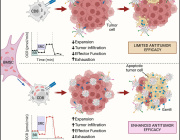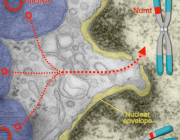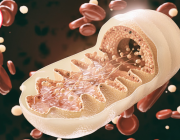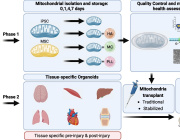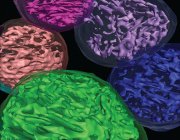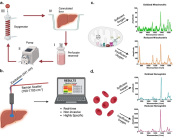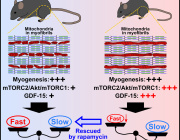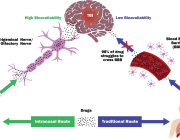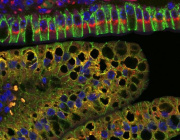Do our mitochondria run at 50 degrees C?

Our body temperature is held at a fairly steady 37.5°C, and the assumption has always been that most of our physiological processes take place at this temperature. The heat needed to maintain this temperature in the face of a colder environment is generated by tiny subcellular structures called mitochondria. But a new study publishing January 25 in the open access journal PLOS Biology by INSERM and CNRS researchers at Hôpital Robert Debré in Paris led by Dr Pierre Rustin (and their international collaborators from Finland, South Korea, Lebanon and Germany) presents surprising evidence that mitochondria can run more than 10°C hotter than the body's bulk temperature, and indeed are optimized to do so. Because of the extraordinary nature of these claims, PLOS Biology has commissioned a cautionary accompanying article by Professor Nick Lane from University College, London, an expert on evolutionary bioenergetics.
To ensure a stable internal temperature, the human body makes use of the heat produced by the last stage of food consumption: combustion of nutrients in structures known as mitochondria, of which there are tens or hundreds in each cell. Mitochondria form a complex network within the cell, and their contents are isolated from the rest of the cell by two membranes. A considerable number of biologically catalyzed chemical reactions take place in their interior; 40% of the energy that they release is captured in the form of a chemical compound, ATP, which is used to drive functions of the body such as heart beats, brain activity or muscle contraction. The remaining 60%, however, is dissipated as heat.
The authors' results appear to show that, in maintaining our body at a constant temperature of 37.5°C, mitochondria operate much like thermostatic radiators in a poorly insulated room, running at a much higher temperature than their surroundings.
This work was made possible by the use of a chemical probe whose fluorescence is particularly sensitive to temperature. When this "molecular thermometer" (Mito Thermo Yellow) was introduced into the heart of the mitochondria, they were able to demonstrate a stabilized temperature of about 50°C. Specifically, the probe's fluorescence suggested that the temperature of the mitochondria in living and intact cells, themselves placed in a culture medium maintained at 38°C, is more than 10°C higher, as long as the mitochondria are functional. This elevated temperature is abolished when the mitochondria are inactivated by various means. The researchers also showed that several human mitochondrial enzymes have evolved an optimum temperature close to 50°C, which helps to support their interpretation of the molecular thermometer data.
Nick Lane, who was not involved in the study, but helped the journal to assess the manuscript, finds the results potentially exciting, but warns that further work needs to be done. In his accompanying Primer, he says "This is a radical claim, and if it is true, how come we didn't know something so important long ago?"
Lane asks a battery of questions about the Mito Thermo Yellow probe, about the plausibility of the extreme temperature gradients which the authors' interpretation imply, and about the meaning of the very concept of "temperature" at such microscopic scales. "We need to know a lot more about both the specific behaviour of Mito Thermo Yellow and its exact location within the mitochondrion before we can come to any firm conclusions about 'temperature'. In the meantime, I doubt that the 10°C temperature difference should be taken literally. But it should be taken seriously."
The authors acknowledge that these high temperatures at the core of the micro-space inside mitochondria are unexpected but emphasize that this revelation should lead to a reassessment of our vision of how mitochondria function and their role in cells. "Much of our knowledge about mitochondria, the activity of their enzymes, the permeability of their membranes, the consequences of genetic defects that impair their activity, the effect of toxins or drugs, have all been established at 37.5°C; the temperature of the human body, certainly, but apparently not that of the mitochondria," they say.
"Heat has fallen out of fashion in biology. Whether or not all these ideas are correct, the distribution and heat generation of mitochondria within cells should be taken much more seriously. These researchers bring this important subject back to centre stage, which is exactly where it should be," concludes Lane.
Journal References:
- Dominique Chrétien, Paule Bénit, Hyung-Ho Ha, Susanne Keipert, Riyad El-Khoury, Young-Tae Chang, Martin Jastroch, Howard T. Jacobs, Pierre Rustin, Malgorzata Rak. Mitochondria are physiologically maintained at close to 50 °C. PLOS Biology, 2018; 16 (1): e2003992 DOI: 10.1371/journal.pbio.2003992
- Nick Lane. Hot mitochondria? PLOS Biology, 2018; 16 (1): e2005113 DOI: 10.1371/journal.pbio.2005113













































